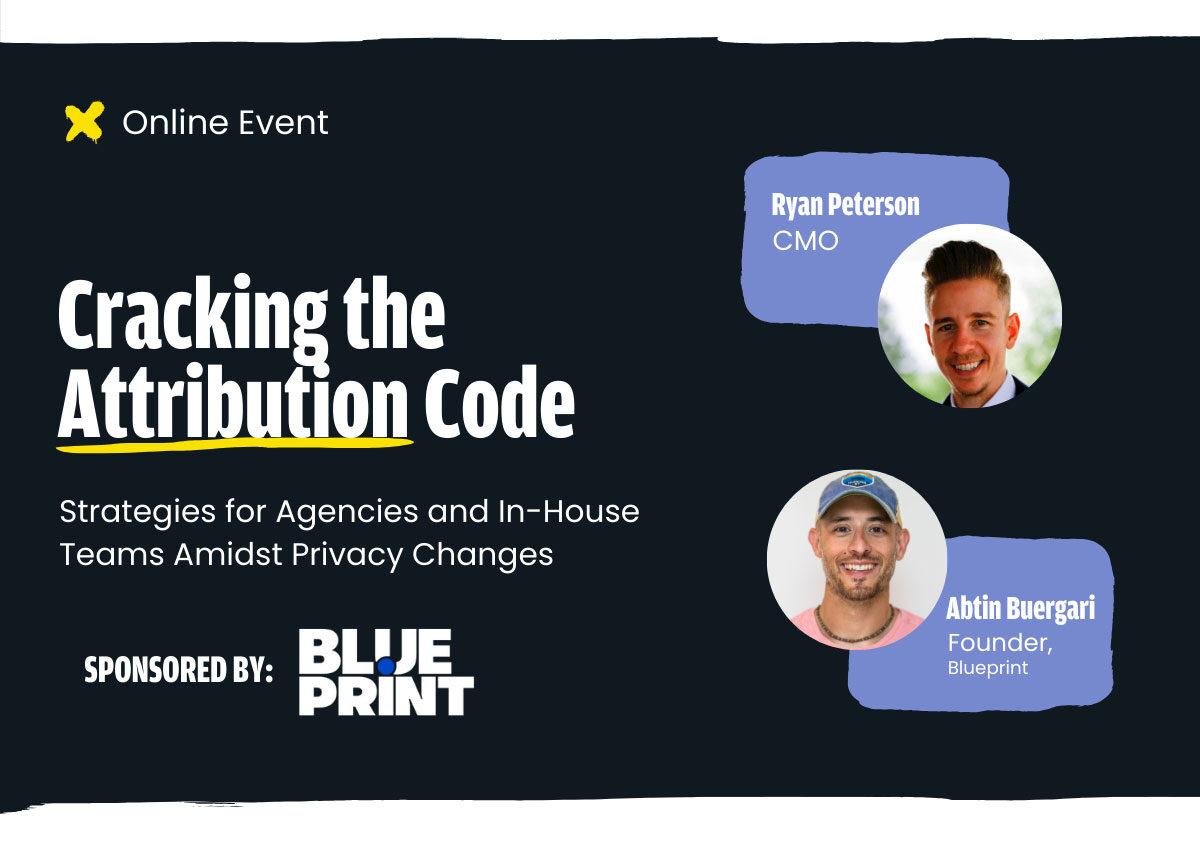How to Measure Advertising Effectiveness | A Guide
In this blog post, we’ll define the meaning of ‘advertising effectiveness,’ address the most commonly asked questions about how to measure the...

Attribution is a fundamental digital marketing concept that often evokes feelings of trepidation and mystery. But it’s much less complicated to grasp than you’d think. When marketers recognize that and tune out all the noise surrounding attribution, they can unlock valuable insights into the effectiveness of their campaigns by leveraging the right tools and strategies. This article demystifies what attribution is within the context of digital advertising by identifying its different types and explaining its practical implications.
The content from this post came from discussions during a recent webinar, "Cracking the Attribution Code: Strategies for Agencies and In-House Teams Amidst Privacy Changes." This webinar is on-demand and covers the strategic shift in Attribution models and how experts are keeping it uncomplicated. On the panel are experts Ryan Petersen and Abtin Buergari.

There are four primary types of attribution to remember: pixels, cookies, statistical attribution, and tags. Each serves a unique purpose in tracking and analyzing user behavior and campaign performance.
🔷Pixels |
🍪Cookies |
📈Statistical |
🏷️Tags |
| Widely used across ad platforms, pixels track user interactions and conversions, offering insights into cross-device and cross-platform activities. | Commonly employed in analytics platforms, cookies track user behavior on websites, providing valuable data for attribution analysis. | This method involves sophisticated statistical models like incremental and marketing mix modeling to evaluate the impact of marketing efforts. | Although an older form of tracking, tags remain relevant for their granularity, compatibility with various analytics environments and lack of susceptibility to privacy management. |
At some point, you'll want to scale your advertising efforts or leverage machine learning to gain deeper insights into the marketing strategies you’ve implemented. These are great goals, but they’re only possible if you’re working with clean, reliable data. And to have that kind of data at your disposal, you need a solid foundation in attribution. This is where marketers often run into trouble.
Most challenges that brands face with attribution stem from siloed information structures that result in inconsistent, unclean data. These siloes can happen for any number of reasons, from working with multiple agency partners who don’t coordinate with each other to an over-reliance on first-party data. Want to Learn More? Read this article on the limitations of first-party analytics, specifically as they relate to TikTok
Regardless of the cause, this problem will inhibit your ability to make informed decisions on several matters like budget allocation, which creatives to prioritize, and identifying your most profitable audience segments. Any attempts to scale your marketing will lead to huge inefficiencies and wasted resources. And machine learning algorithms won’t be able to identify what’s working and what’s not.
Don't solely rely on platforms' attribution models. That can be risky. Instead, establish your own attribution system to ensure consistency and reliability. Implement a strong, unified tagging structure so you can analyze your creatives' performance holistically, identifying high-performing creatives and scaling them across multiple platforms. You should do this whether your advertising is in-house or outsourced to agencies. And once you do, you’ll get the campaign performance insights you need.
You need to be tracking KPIs onsite as well as everything that is being driven to the site.Ryan Petersen
When managing multiple marketing channels, choosing the right tools and platforms is important to your success. Look for solutions that offer comprehensive insights into keyword performance, search terms, and ad efficiency. Additionally, consider the balance between leveraging expensive platforms like Performance Max and maintaining cost-effectiveness in your advertising endeavors.
Leveraging available resources will go a long way towards getting your attribution where you want it to be. Don't shy away from free tools like Blueprint's Ad Healthcheck to gain valuable insights into your advertising performance. You'll get cross-platform analysis, trend identification, and actionable recommendations that will help you start optimizing your marketing strategies and tactics.
Attribution is more than a marketing buzzword; it's a fundamental aspect of modern advertising that has acquired a reputation for being complicated. But the truth is that attribution is easier to measure and determine today than ever before. Especially when you use tools like Blueprint that distill information through cross-channel analysis into actionable, understandable insights.To learn more on how Blueprint can help you establish robust attribution systems and infrastructure and unlock the full potential of your business's marketing efforts, watch our webinar that covers this subject in greater detail.

In this blog post, we’ll define the meaning of ‘advertising effectiveness,’ address the most commonly asked questions about how to measure the...

Grounded in the practical insights from years of experience, aims to equip marketers with the knowledge to demystify attribution for media buyers...

TikTok has made waves all over the advertising landscape for a few years now. And their latest big announcement — unveiling their first-party...